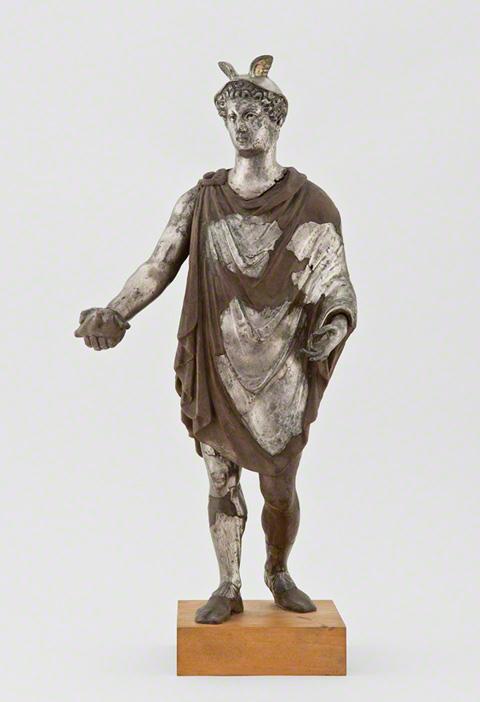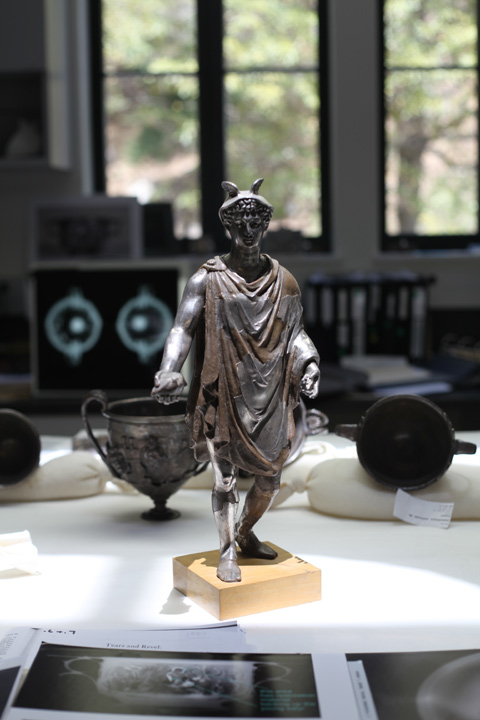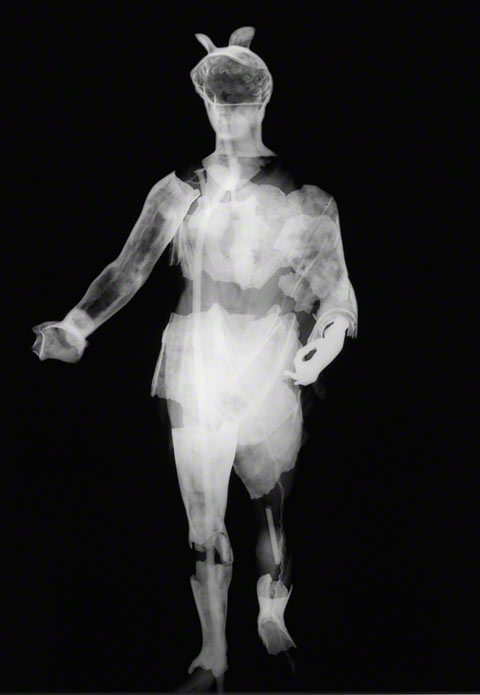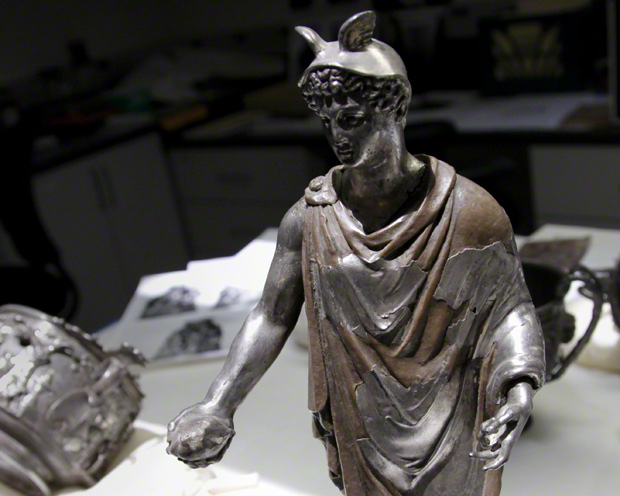The J. Paul Getty Museum and the Bibliothèque nationale de France are collaborating on the research and conservation treatment of the Berthouville Treasure, the extraordinary Roman silver hoard from the Bibliotheque’s Cabinet des Médailles.

Antiquities curator Kenneth Lapatin with in the antiquities conservation studio at the Getty Villa with the statuette of Mercury from the Berthouville Treasure (Roman, 100 B.C.-A.D. 200. Silver, 14 5/8 in. high. Bibliothèque nationale de France, Département des monnaies, médailles et antiques, Paris).
Almost one hundred objects arrived at the Getty Villa in December 2010, and technical examination, analysis, and photography of the individual artifacts continued throughout 2011.
One of the most intriguing objects is a small silver statuette, about 14 inches high, of Mercury, the Roman god of travel and commerce. The statuette was found in fragments, which were entrusted in the 19th century for restoration to Alexi Joseph Depaulis, a well known artist who worked in metal.


Knowing what has been done to the sculpture over the years, and what is inside it, is the first step in understanding how to properly conserve it. Close visual analysis along with X-radiographs have revealed much about this history.
X-rays revealed that Depaulis employed an armature of small metal rods with twisted wire. Wax was used to construct a stable support structure to hold the individual silver fragments. Analysis by our colleagues at the Getty Conservation Institute has established that the wax is natural beeswax.

We have also discovered that when Depaulis first restored the figure in the 1830s, the wax was lighter in color and more in harmony with the adjoining silver fragments. The results of recent wax analysis indicates that lead white was added to the wax mixture, which lightened the overall appearance of the wax restoration. Over the past 180 years the wax has darkened and become discolored.
Our study also suggests that the silver used to create the Mercury statuette was manufactured by hammering silver to a thin gauge sheet, but the left hand is solid and seems to have been made separately and to have been attached to the wrist of the right arm by sliding its wrist portion into the hollow arm. Traces of gilding on the wings of the god’s helmet are also preserved. The support rods appear to be solid and stable, so we have no plans to remove them.
Our work on this statue was one of what we hope to be many more interesting findings with this project.





What do you plan to do about the discolored wax? Leave it as it is? Replace it somehow to return it to its appearance in the 19th century?
Hello Karol, The historic wax restoration is in stable condition and will only require minimal conservation treatment. Ultimately, we would like to reduce the darkened appearence of the wax by cleaning the surface but it remains to be seen how far it can be lightened. We are researching possible cleaning techniques, but have to proceed with caution as we do not want to harm the wax in any way. We will also consult with the curators of the Bibilotheque nationale de France as to the final aesthetic appearance.
What do you use to restore and maintain the luster and shine of the silver?